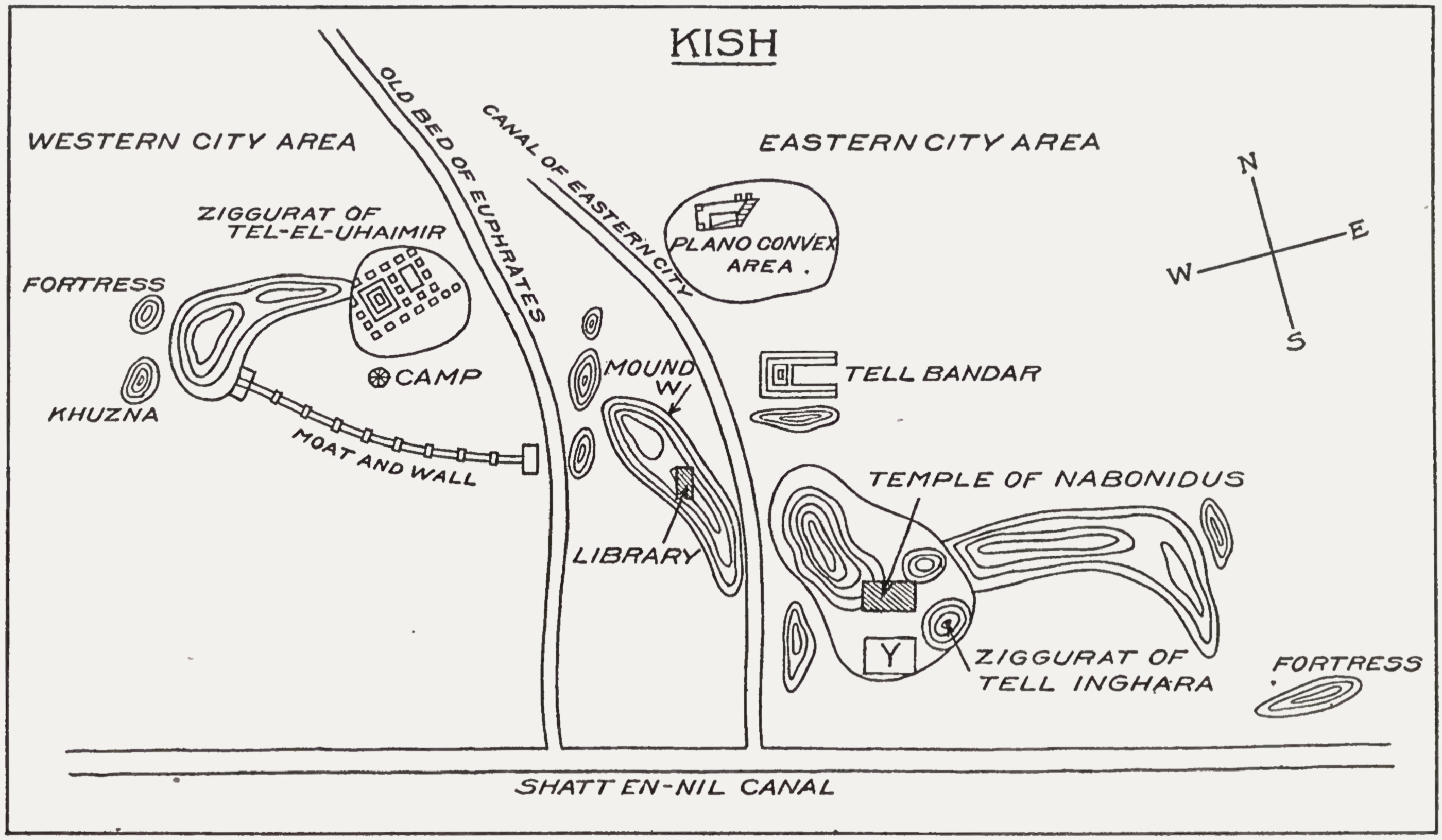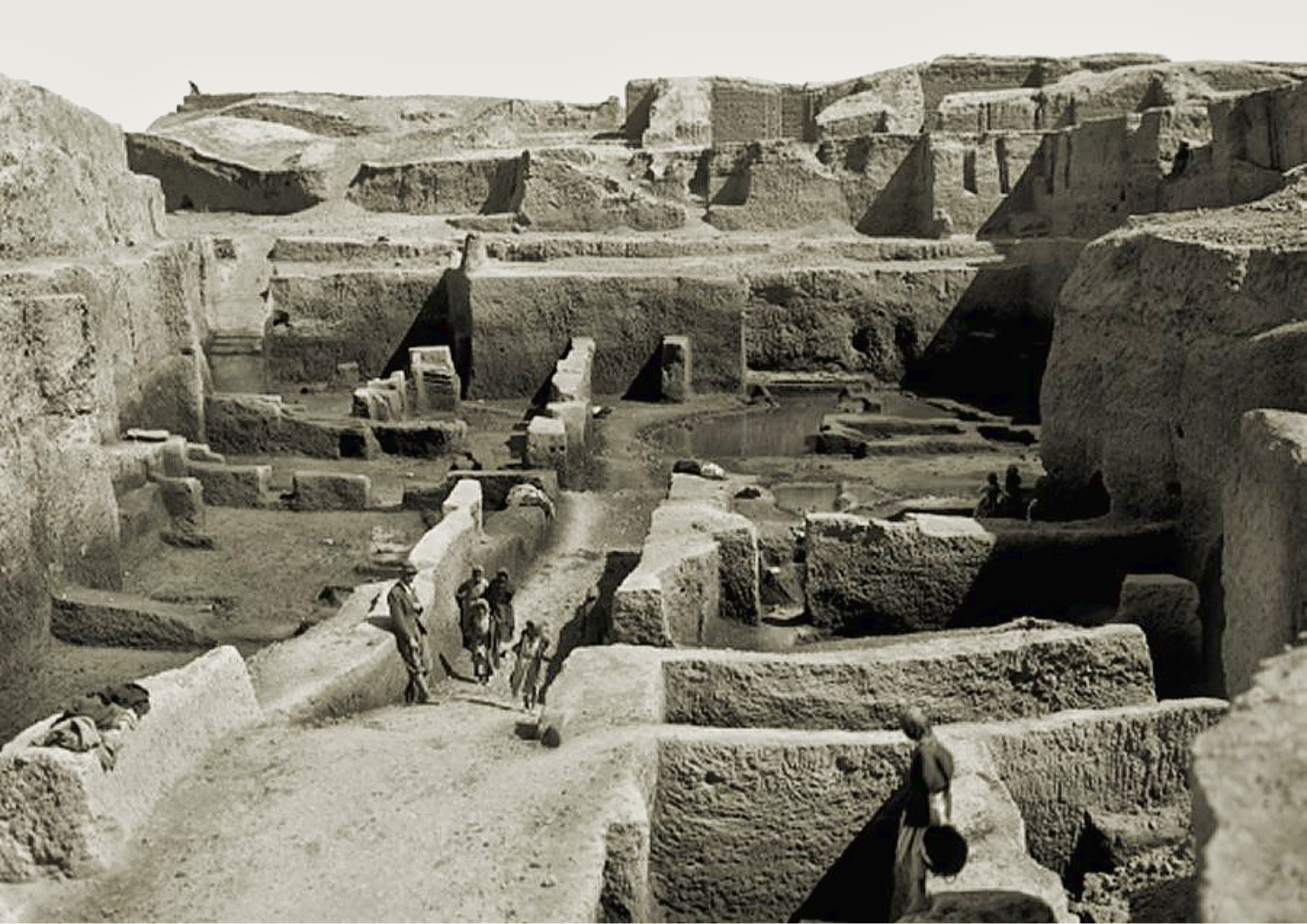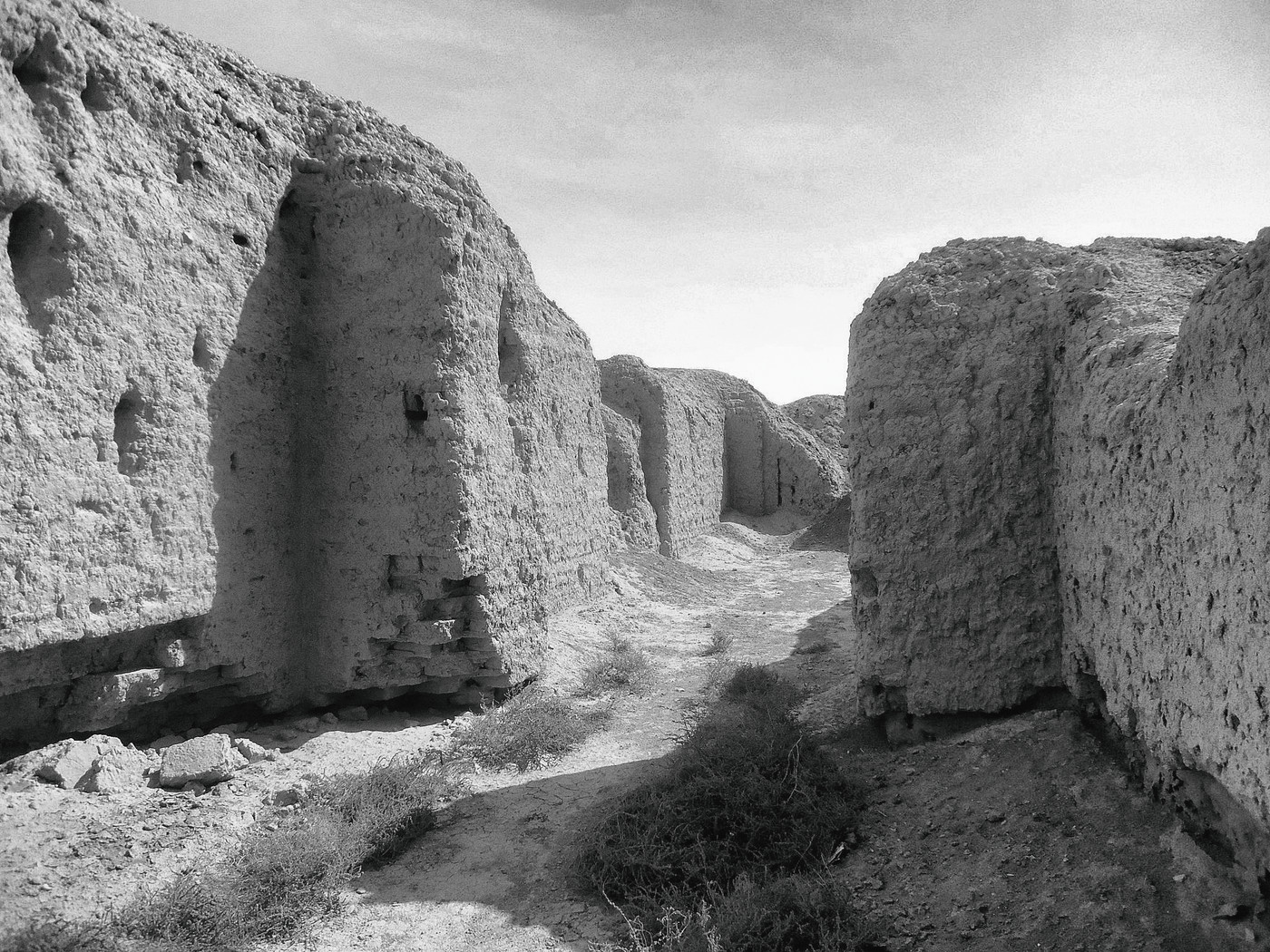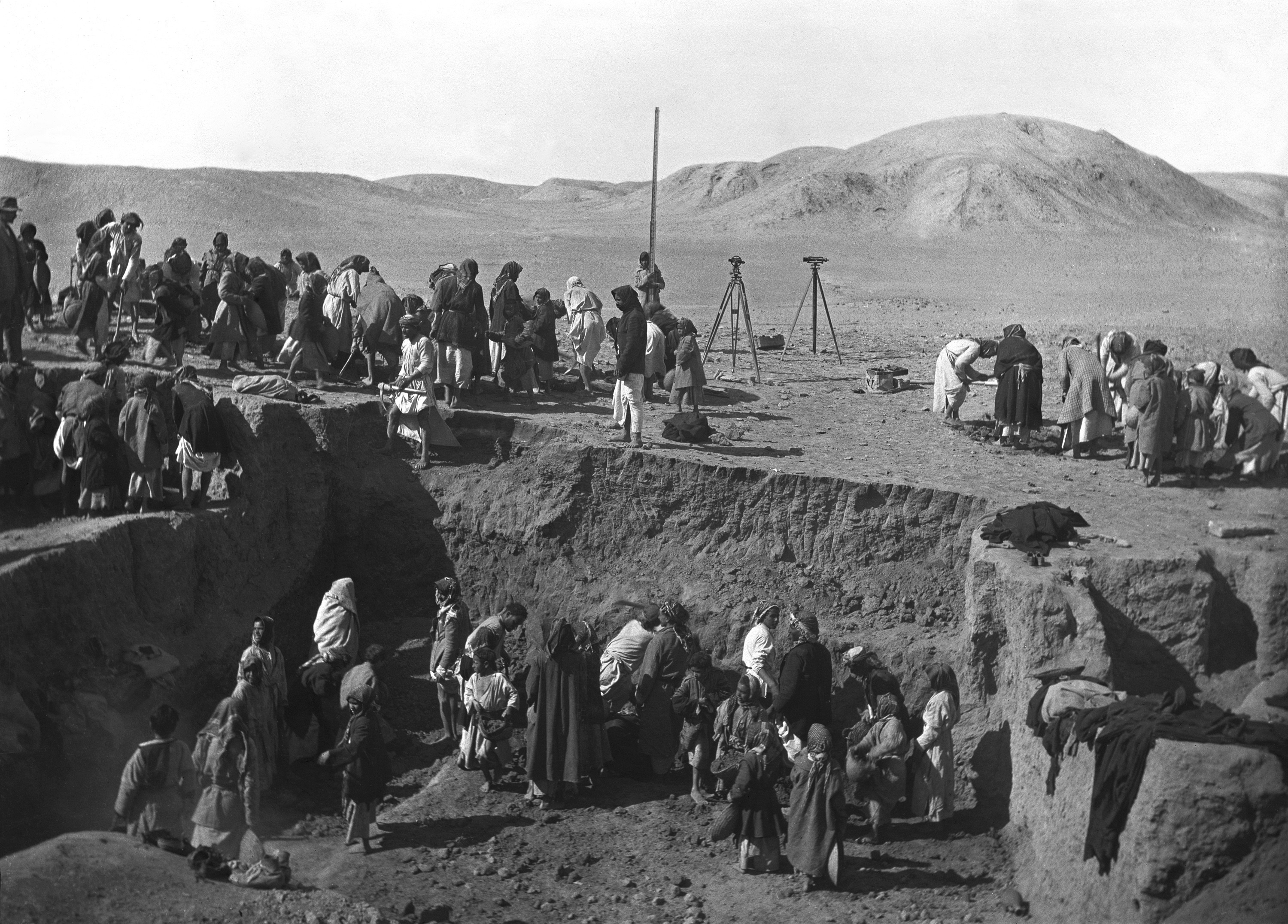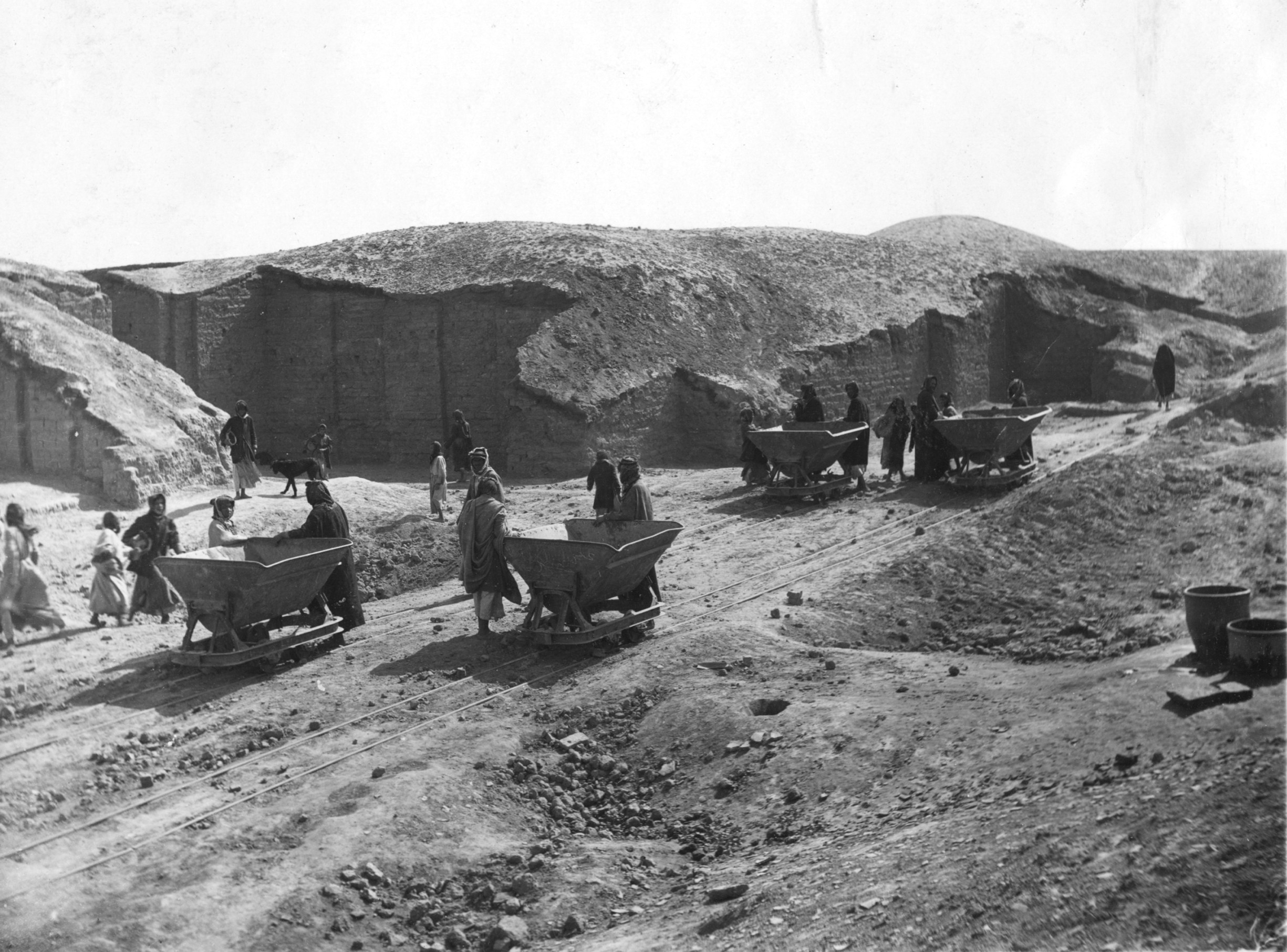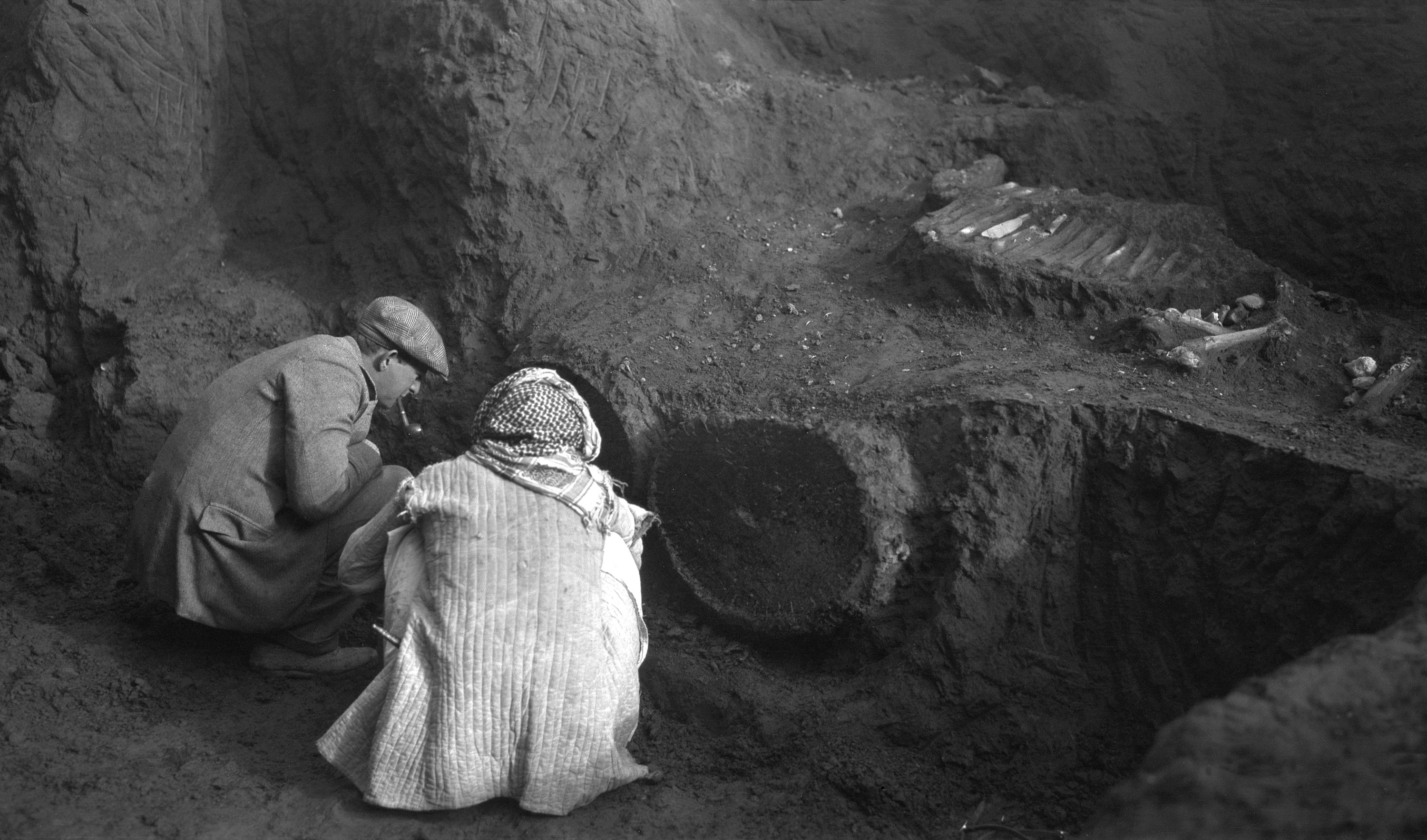The Kish Expedition
"After the flood had swept over and the kingship had descended from heaven; the kingship was in Kish."
In the fall of 1922 and spring of 1923, a preliminary field party began preparations for a multi-year expedition to excavate the site of the ancient city of Kish. This expedition, which is expected to take as many as six to eight years to complete, is jointly sponsored by the Field Museum of Natural History and the Ashmolean Museum. Permission for the expedition was granted by Gertrude Bell through her offices with the British Mandate Authority and the Baghdad Archaeological Museum.
By the summer of 1923, the overall layout of the site was established and local laborers were hired. This laid the groundwork for the first full digging season beginning that autumn.
The City of Kish
Although little more than mounds and depressions mark the ruins, Kish was once a grand city so ancient, it is said to be the first founded after the Great Flood. It lies about a hundred miles south of Baghdad, between the Tigris and Euphrates rivers in the newly-formed nation of Iraq. In more prosaic terms, it appears that the city was founded roughly 3100 BCE. For at least two thousand years, it served as the capital of Mesopotamia, through a succession of empires. The Sumerians, Akkadians, various kingdoms all held court there. It continued on as a religious hub for the Assyrians and Babylonians. Kish remained even through the various Persian empires and the rise of Islam, finally being abandoned some time late in the thirteenth century CE, ending some 4400 years of occupation.
The Dig Site
The site consists of low mounds of a distinct reddish soil that gives the place its Arabic name of Tell el-Uhaimir. The surface of the mounds is studded with fragments of pottery. While the city spanned nearly five miles north to south and two miles from east to west, the dig site is much smaller, concentrated in the old center. At one point, Kish had spanned the Euphrates River, until it changed its course to the west, long ago. Currently, the nearest town is Hillah, about eleven miles to the west, down a track that doesn't deserve the title "road" in good weather.
A number of locations within the site have been identified, including the Temple of Nabonidus and what may be a very large building of some sort.
The Field Party
In order to get the expedition off to a good start, more than the usual number of archaeologists have been assembled for the 1923-24 field season. This has allowed for specific locations to be opened up while a general site survey was still underway.
Stephen Langdon, of Oxford University, serves as the expedition Director. Ernest Mackay serves as the site supervisor and logistics coordinator.
The other American and British party members are: Peter Jackson of Oxford University, Henry Field of both Oxford University and the Field Museum, Walter Halden, of the University of California (through the Field Museum), and Vincent Duncan of the University of Pennsylvania (through the Field Museum).
The Jokhas
The work gangs are known as "jokhas" and are divided into two types: the diggers and the railway gangs. The digging gangs consist of a pickman, two or three shovelers who load the baskets, and six to ten basket-boys who haul the baskets.
Each jokhas has a Rais (foreman) who monitors the digging, collects anything found, and calls an archeologist over if anything really valuable appears.
Included Locations

